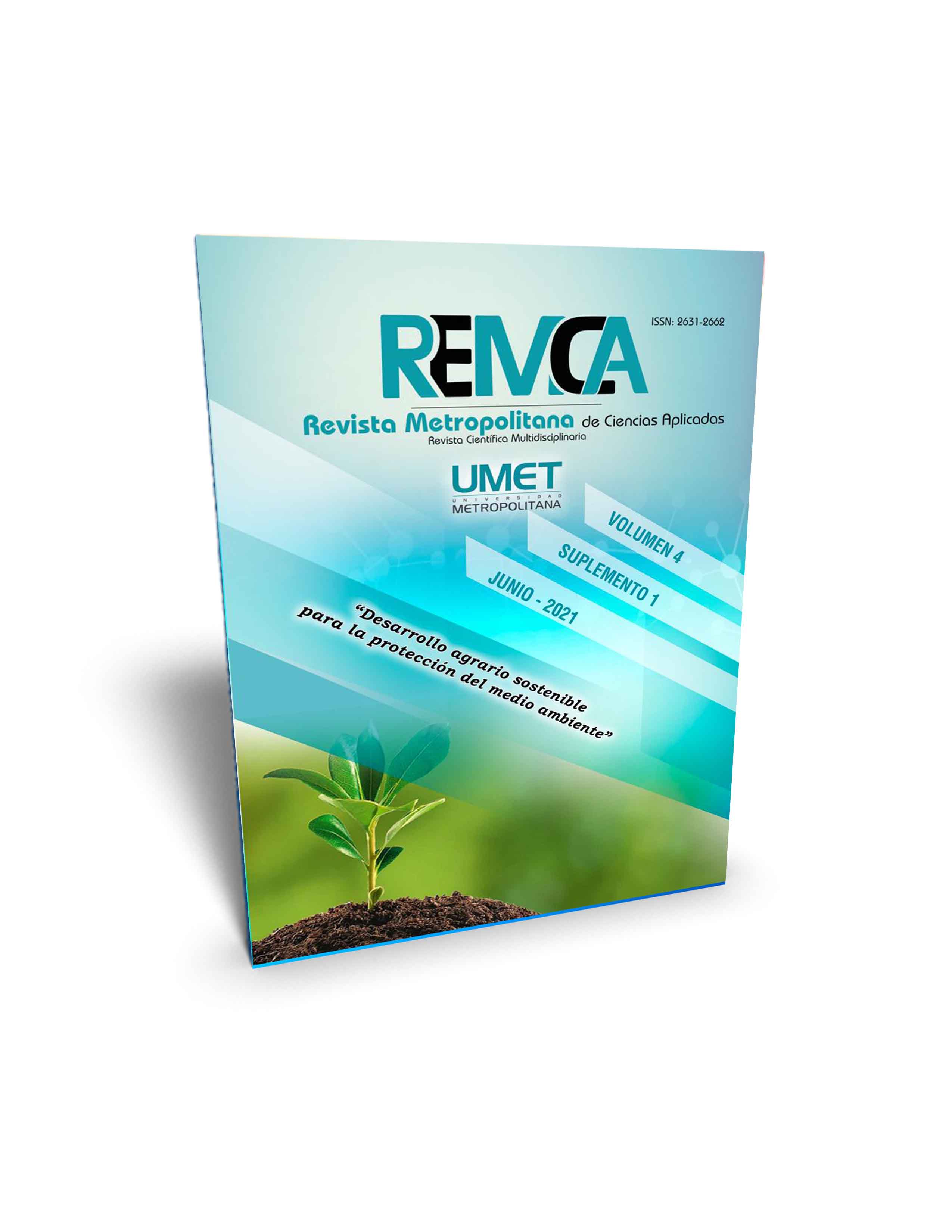Loss and waste of food in a market in the city of Santiago de Cuba
DOI:
https://doi.org/10.62452/rqjrhs55Keywords:
Losses, waste, foodsAbstract
The issue of food losses is very important in efforts to fight hunger, increase incomes and improve food security in the poorest countries of the world. Food losses affect the food security of the poor, food quality and safety, economic development and the environment. The research was conducted in the state agricultural market “La Vallita”, located on Garzón Avenue in the city of Santiago de Cuba, from September 2018 to April 2019. The purpose of this research is to determine the causes of the losses of agricultural products develop a strategy to reduce losses and waste of food for internal use of the market to raise the standard of service and finally quantify economically the losses and waste of food during the investigation period to implement measures that reduce the same. The losses and waste of food occur mainly due to failures in the productive system.
Downloads
References
Alianza contra el Hambre y la Malnutrición de España. (2017). Sostenibilidad de los sistemas de producción de alimentos. http://fademur.es/fademur/wp-content/uploads/2017/05/sostenibilidad-de-los-sistemas-de-produccin-de-alimentos-2017.pdf
Anaya, B. (2020). Acceso a los alimentos en Cuba: prioridad, dificultades y reservas para mejorar. Econ. y Desarrollo, 164(2).
Argentina. Università di Bologna. (2016). Diseño metodológico para la estimación del desperdicio de alimentos en la Argentina en las etapas de distribución y comercio minorista y consumo en el hogar Informe final. http://www.ba.unibo.it/...perdidas...desperdicios-de-alimentos.../PDA%20Argentina%20%20
Blanco, A. (2016). Reducción de pérdidas y desperdicios alimentarios y bienestar social: una relación posible. http://www.mercasa.es/files/multimedios/1463938380_Reduccion_de_perdidas_y_desperdicios_alimentarios_y_bienestar_social.pdf
Cañet, F., & Didonna, F. (2014). Pérdidas y desperdicios de alimentos: puntos críticos y cómo evitarlos. Revista Ambientico, 38 – 40.
Eguillor, P. (2017). Pérdida y desperdicios de alimentos. http://www.odepa.gob.cl/wp-content/uploads/2017/12/residuosFinal-1.pdf
Gavilán, M. (2016). Sistema Agroalimentario y Pérdidas Alimentarias. http://www.iica.int/sites/default/files/events/presentations/2016-09/monica_gavilan_una_paraguay_sistema_agroalimentario_y_perdidas_alimentarias.pdf
Gobierno de Colombia. (2016). Pérdidas y Desperdicios de alimentos en Colombia. Dirección de Seguimiento y Evaluación de Políticas Públicas. https://colaboracion.dnp.gov.co/CDT/Prensa/Presentaciones/Perdidas%20y%20Desperdicios%20de%20alimentos%20en%20Colombia.pdf
Jensen, C., Stenmarck, Å., Sörme, L., & Dunsö O. (2011). Food waste in Sweden 2010 - from field to fork. SMED Rapport Nr 2011-99. http://www.naturvardsverket.se/Documents/publikationer6400/978-91-620-8695-4.pdf
Møller, H., et al. (2014). Standard approach on quantitative techniques to be used to estimate food waste levels. FUSION. https://www.eu-fusions.org/index.php/download?download=2:standard-approach-on-quantitative-techniques
Organización de las Naciones Unidas para la Alimentación y la Agricultura. (2011a). Iniciativa Mundial sobre la Reducción de la Pérdida y Desperdicio de Alimentos. FAO. http://www.fao.org/save-food/savefood/es/
Organización de las Naciones Unidas para la Alimentación y la Agricultura. (2011b). Informe sobre pérdidas y desperdicios de alimentos. FAO. http://www.fao.org/cfs/cfs-hlpe/informes/es/
Organización de las Naciones Unidas para la Alimentación y la Agricultura. (2012). Pérdidas y desperdicio de alimentos en el mundo – Alcance, causas y prevención. FAO. http://www.fao.org/3/i2697s/i2697s.pdf
Organización de las Naciones Unidas para la Alimentación y la Agricultura. (2014). Primer Boletín de Pérdidas y Desperdicios de Alimentos en América Latina y el Caribe. FAO. http://www.fao.org/3/a-i3942s.pdf
Organización de las Naciones Unidas para la Alimentación y la Agricultura-Organización Panamericana de la Salud. (2017). Panorama de la seguridad alimentaria y nutricional. FAO-OPS. http://iris.paho.org/xmlui/bitstream/handle/123456789/33680/9789253096084-spa.pdf?sequence=1&isAllowed=y
Sáez, L., Díaz, C., & Cantin, M. (2018). Desarrollo de mercados locales y circuitos cortos en Chile. http://credits367.info/credits/64772
World Resources Institute. (2014). Climate Analysis Indicators Tool. http://cait.wri.org
Downloads
Published
Issue
Section
License
Copyright (c) 2021 Miriela Rizo Mustelier, Daniel Rafael Vuelta Lorenzo (Autor/a)

This work is licensed under a Creative Commons Attribution-NonCommercial-ShareAlike 4.0 International License.
Authors who publish in Revista Metropolitana de Ciencias Aplicadas (REMCA), agree to the following terms:
1. Copyright
Authors retain unrestricted copyright to their work. Authors grant the journal the right of first publication. To this end, they assign the journal non-exclusive exploitation rights (reproduction, distribution, public communication, and transformation). Authors may enter into additional agreements for the non-exclusive distribution of the version of the work published in the journal, provided that acknowledgment of its initial publication in this journal is given.
© The authors.
2. License
The articles are published in the journal under the Creative Commons Attribution-NonCommercial-ShareAlike 4.0 International License (CC BY-NC-SA 4.0). The terms can be found at: https://creativecommons.org/licenses/by-nc-sa/4.0/deed.en
This license allows:
- Sharing: Copying and redistributing the material in any medium or format.
- Adapting: Remixing, transforming, and building upon the material.
Under the following terms:
- Attribution: You must give appropriate credit, provide a link to the license, and indicate if any changes were made. You may do this in any reasonable manner, but not in any way that suggests the licensor endorses or sponsors your use.
- NonCommercial: You may not use the material for commercial purposes.
- ShareAlike: If you remix, transform, or build upon the material, you must distribute your creation under the same license as the original work.
There are no additional restrictions. You may not apply legal terms or technological measures that legally restrict others from doing anything the license permits.




